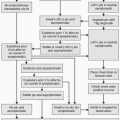Hepatic Metastases: Chemoembolization
Michael C. Soulen
Indications
1. Liver-dominant hepatic metastases. Patients with minimal or indolent extrahepatic disease may be candidates if the liver disease is considered to be the dominant source of morbidity and mortality for that individual.
2. In addition to primary hepatic malignancies such as hepatocellular carcinoma and cholangiocarcinoma, tumors that typically meet these criteria include metastases from colorectal cancer, neuroendocrine tumors, ocular melanoma, and sarcomas. Occasionally, pancreas, breast, lung, or other cancers will have liveronly or liver-dominant metastases.
Contraindications
1. Contraindications to angiography
a. Severe anaphylactoid reactions to radiographic contrast media
b. Uncorrectable coagulopathy
c. Severe peripheral vascular disease precluding arterial access
2. Contraindications to administration of chemotherapy
a. Severe thrombocytopenia (<50,000 per µL) or leucopenia (absolute neutrophil count [ANC] <1,000 per µL)
b. Cardiac (American Heart Association [AHA] class III to IV failure) or renal insufficiency (creatinine >2.0 mg per dL)
3. Contraindications to hepatic artery embolization
a. The presence of hepatic encephalopathy or jaundice is an absolute contraindication to embolization.
b. Tolerance of hepatic artery occlusion is dependent on the presence of portal vein inflow. The portal vein must be carefully assessed at the time of angiography. Compromise in portal venous blood flow is only a relative contraindication to hepatic embolization. Chemoembolization can be performed safely despite portal vein occlusion if hepatopetal collateral flow is present (1). In this setting, a smaller volume of the liver should be embolized at any one time.
c. When the parenchyma is diseased, the liver becomes more dependent on the hepatic artery and less on the portal vein. A subgroup of patients has been identified who are at high risk of acute hepatic failure following hepatic artery embolization. They have a constellation of more than 50% of the liver volume replaced by tumor, lactate dehydrogenase (LDH) greater than 425 IU per liter, aspartate transaminase greater than 100 IU per liter, and total bilirubin of 2 mg per dL or greater (2).
d. Presence of a bilioenteric anastomosis, biliary stent, or prior sphincterotomy allows for colonization of the bile ducts with enteric bacteria. Hepatic artery embolization causes microscopic bile duct injury, leading to liver abscess formation, which can be fatal (3). This occurs almost universally even with routine antibiotic prophylaxes. Aggressive prophylactic regimens can decrease the incidence of liver abscess to around 20% (4).
e. Biliary obstruction is a relative contraindication. Even with a normal serum bilirubin, the presence of dilated intrahepatic bile ducts places the patient at high risk for bile duct necrosis and biloma formation in the obstructed segment(s) of the liver. Presumably, the resistance to bile outflow increases pressure in the sinusoids, which in turn decreases portal inflow and makes the liver more dependent on arterial blood.
f. Inability to position the catheter tip selectively, so as to avoid nontarget embolization of the gut, skin, or other vulnerable extrahepatic structures, places the patient at risk for serious injury. Coil blockade of the nontarget vessel can be performed to allow chemoembolization to be performed safely. The cystic artery can be chemoembolized safely, although doing so will increase the intensity and duration of postembolization syndrome (5).
Preprocedure Preparation
Pretreatment Assessment
1. Tissue diagnosis or convincing clinical diagnosis (e.g., liver mass with characteristic features and elevated tumor markers)
2. Cross-sectional imaging of the abdomen and pelvis (computed tomography [CT] or magnetic resonance imaging [MRI])
3. Exclusion of substantial extrahepatic disease (chest x-ray or CT, positron emission tomography [PET]-CT)
Patient Education
Before embarking on this fairly arduous palliative regimen, patients should be thoroughly informed of the side effects and risks (6). Eighty percent to 90% of patients suffer a postembolization syndrome, characterized by pain, fever, and nausea and vomiting, fatigue, and anorexia. The severity of these symptoms varies from patient to patient and can last from a few hours to a few weeks. Other significant toxicities are rare. Serious complications occur after 5% to 7% of procedures. Given the significant discomforts, hazards, and expense of this treatment, its palliative role should be clearly understood.
Patient Preparation
1. Patients fast overnight.
2. The patient is admitted to the hospital the morning of the procedure.
3. Vigorous hydration is instituted (normal saline solution [NS] at 200 mL per hour).







